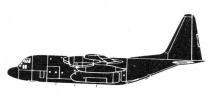Incident Overview

Description
A Cessna Citation I/SP corporate jet, registered N452TS, crashed while on approach to Trier-Fhren Airport in Germany. All four on board were killed. Before departure from Shoreham Airport, U.K, the pilot had called the destination airport, Trier-Fhren. He was told it would be better to postpone the departure because of thick fog. The departure was not postponed and the Citation jet took off from Shoreham about 10:00 hours. Alternate airfields were Luxembourg and Frankfurt-Hahn. Given the weather conditions the owner of the aircraft expected a diversion, and according to family members did not but pressure on the pilots to land at Trier. The en route and descent part of the flight were uneventful. At 11:45, while descending from FL90 to 5000 feet, the pilot in command contacted air traffic control to cancel their IFR clearance. The controller confirmed this and reported that they were 15 miles northwest of their destination airfield. The airplane was approaching runway 22 and descended until it was flying at a very low altitude, clearing trees by some 15-20 meters, according to eyewitnesses. It pulled up and struck an electricity pylon at a height of about 8 m above the ground. Control was lost and the airplane rolled inverted and crashed. It came to rest inverted on the site of a landfill, located 3,8 km from the threshold of runway 22 and about 700 m to the left of the extended centreline. A fire erupted. The continued descent to the ground likely occurred due to an erroneous selection of the target altitude with 0 ft (sea level) instead of the real aerodrome elevation (666 ft AMSL). Good Crew Resource Management could have brought this error to light but the different personality traits of the two pilots and particularly the captains low appreciation of the co-pilot probably negatively influenced the working relationship in regards to CRM principles. Weather at Trier about the time of the accident was a visibility of 100-150 m in fog, wind 040ø at 3-5 knots, temperature -1øC, QNH 1020 hPa. Causes The accident was due to the following: – The Pilot in Command (PIC) decided to conduct the VFR approach even though he was aware of the prevailing instrument weather conditions at the airport – It is likely that a wrong vertical profile was flown due to an erroneous selection on the navigation system – Due to an insufficient situational awareness of the pilots the descent was not aborted in time. The following factors contributed to the accident: – Insufficient Crew Resource Management (CRM)
Primary Cause
Erroneous vertical profile selection due to a faulty navigation system, compounded by insufficient situational awareness of the pilots, leading to a misjudgment of the target altitude and a subsequent erroneous descent.Erroneous vertical profile selection due to a faulty navigation system, compounded by insufficient situational awareness of the pilots, leading to a misjudgment of the target altitude and a subsequent erroneous descent.Share on:





